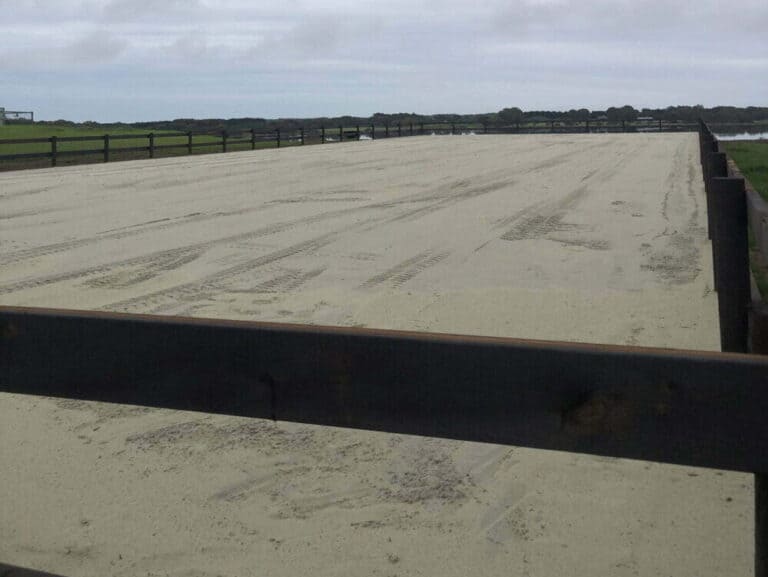The design of an equestrian facility plays a significant role in impacting both horse and rider performance.
A well-thought-out design can enhance safety, comfort, and functionality, leading to improved training, better horse care, and more successful outcomes for riders. Here’s how the design of an equestrian facility can impact performance:
1. Safety and Comfort:
Proper layout and design will reduce hazards and potential accidents for both horses and riders.
Safe pathways, appropriate lighting, well-designed fencing, and clear signage contribute to a secure environment.
2. Arena Design:
Arena dimensions, footing quality, and lighting impact the ease of training and performance.
Suitable arena size, footing material, and lighting levels cater to different disciplines and improve horse-rider interaction.
3. Horse Well-being:
Properly designed stalls and paddocks promote horse comfort, health, and social interaction.
Good ventilation, natural lighting, and ergonomic stall dimensions contribute to the well-being of horses.
4. Rider Facilities:
Well-designed tack rooms, wash areas, lounges, and restrooms enhance rider comfort and convenience.
Adequate storage and workspace can streamline training routines and horse care.
5. Accessibility:
Accessible pathways, ramps, and amenities accommodate riders with disabilities, promoting inclusivity and equal participation.
6. Efficiency in Care and Management:
Thoughtful layout and design reduce the time and effort required for feeding, grooming, and veterinary care.
Efficiently organized feed and equipment storage areas save time and improve daily operations.
7. Cross-Functionality:
8. Drainage and Environmental Factors:
Proper drainage and footing management minimize footing issues and water accumulation, improving the riding experience.
Adequate shelter, shade, and protection from harsh weather conditions enhance horse and rider comfort.
9. Psychological Impact:
Aesthetic design and pleasant surroundings contribute to a positive atmosphere, reducing stress for both horses and riders
10. Long-Term Impact:
A well-designed facility requires less frequent renovations, saving time and money in the long run.
The facility’s reputation for good design and maintenance can attract clients, riders, and trainers.
11. Training Opportunities:
Designing varied features such as jumps, obstacles, and trails can offer diverse training opportunities for riders and horses.
12. Spectator Experience:
13. Noise and Distractions:
Thoughtful facility design can minimize external noises and distractions, creating a focused training environment.
14. Traffic Flow:
Properly designed traffic flow patterns for horses, riders, and vehicles reduce congestion and potential conflicts.
15. Eco-Friendly Practices:
Incorporating sustainable design elements can minimize the facility’s environmental impact and promote responsible practices.
A well-designed equestrian facility contributes to a harmonious relationship between horses and riders, creating an environment that fosters effective training, enhances performance, and improves the overall equestrian experience.
Collaborating with experienced equestrian facility designers, trainers, and professionals can help ensure that the design aligns with the needs of both horses and riders.

